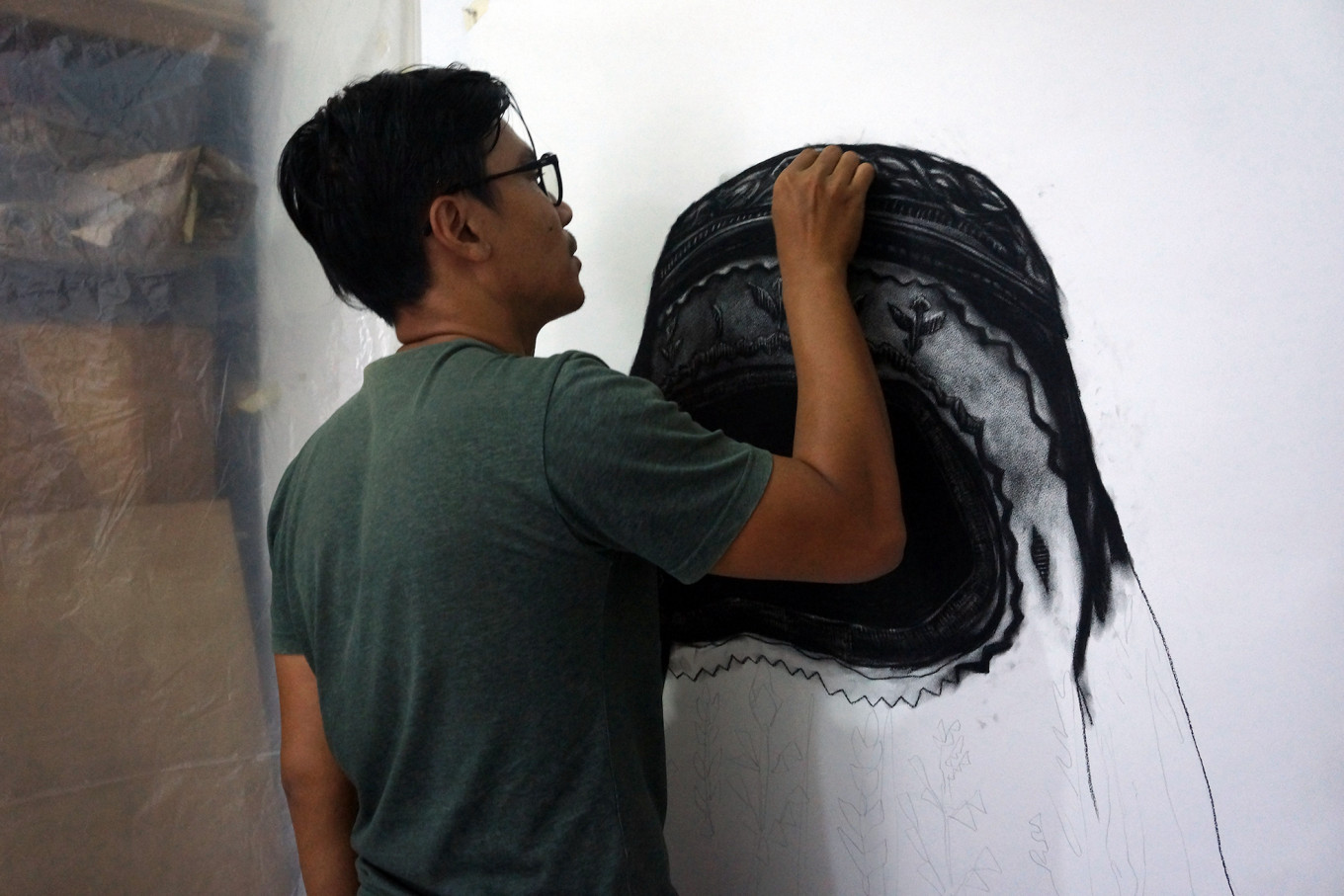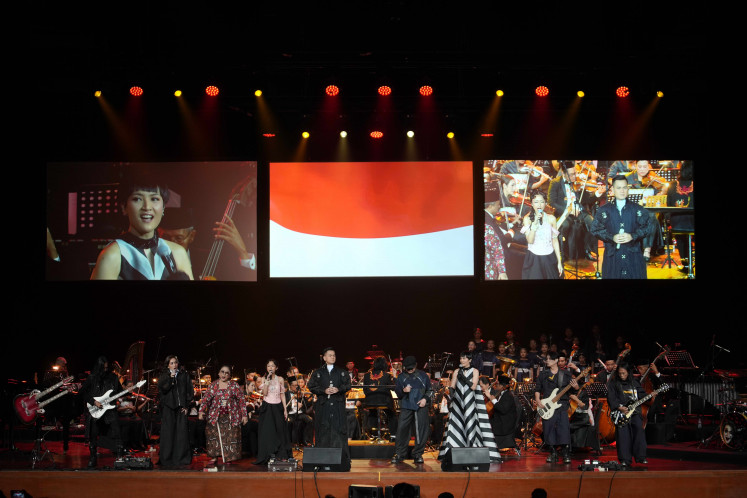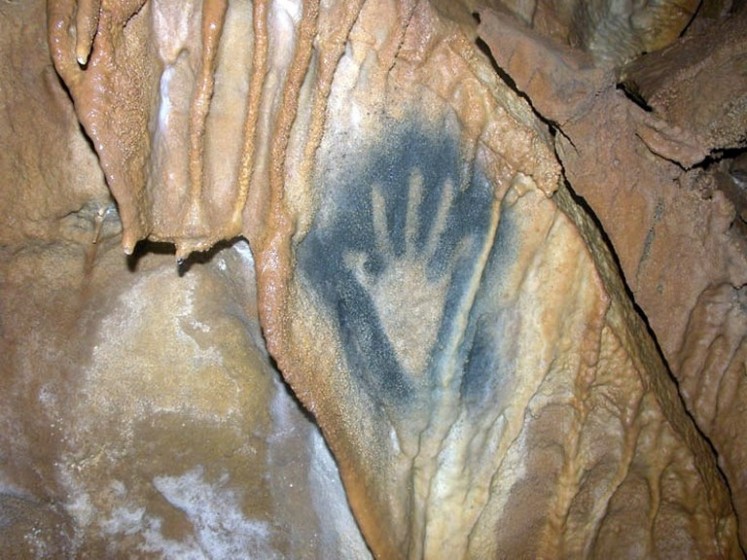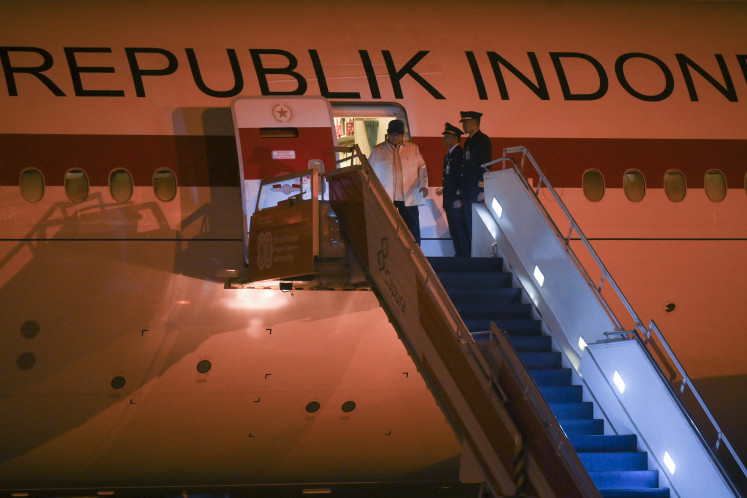Popular Reads
Top Results
Can't find what you're looking for?
View all search resultsPopular Reads
Top Results
Can't find what you're looking for?
View all search resultsAn artistic exploration of Islamic paradoxes
Change text size
Gift Premium Articles
to Anyone
Artist Mujahidin Nurrahman uses his art to explore the contradictions and paradoxes of Islam
The acrylic paper twisted, woven and turned, its multicolored hues and delicate, intricate shape seamlessly changing in an unending, organic manner. Titled “Twisted Infinity” by artist Mujahidin Nurrahman evokes fine Japanese washi paper and Islamic prayer wall art. The overall effect seems to flow and move to its beat, in line with the name of the Ritme (Rhythm) Islamic art exhibition.
“The [Ritme] exhibition seeks to explore the concept of rhythm, its connection to the natural world, and its impact on our emotions and spiritual well-being,” said the curatorial for Ritme, which shows Mujahidin’s work alongside those of fellow artists AD Pirous, A. Sebastianus, Dian Mayang Sari and others in its run at the World Trade Center building in Jakarta until June 9. “The artworks in the exhibition are curated based on their exploration of time, space, patterns and spirituality […] and offer insights into how rhythm can create a deeper sense of meaning and connection.”
Observing contradictions
While the Bandung Institute of Technology (ITB) alumnus in printmaking reiterates the symmetry and rhyme in “Twisted Infinity”, he asserts that the mixed media piece is his way of “tracing the theme of religions [specifically Islam] in the development of my work. I first thought of making [“Twisted Infinity”] in 2009 or 2010, when I explored the negative side of Islam, such as radicalism, terrorism, and even my name and its radical connotations,” Mujahidin said in an email to The Jakarta Post on April 20. “While ‘Twisted Infinity’ might be made in arabesque, geometric, calligraphic patterns in Islamic art, the motifs are actually those of AK-47 assault rifles. As an individual from a devout Muslim background, I have to accept this contradiction with Islam’s peaceful precepts and the wide scope of its views, including views or interpretations that one can only describe as negative.”
Mujahidin poignantly used the AK-47 motif in mixed-media works such as the “Kamon” series and “Invincible”. The artsociates.com art management website noted that he set out to “articulate the notions of anathema and disquietude out of an otherwise delicate and decorative appearance, seemingly free from strife.” It also noted that he set out to “depict one of the perceptions that the world has of Islam: Behind the beauty, there is a strong perception of violence.”



















